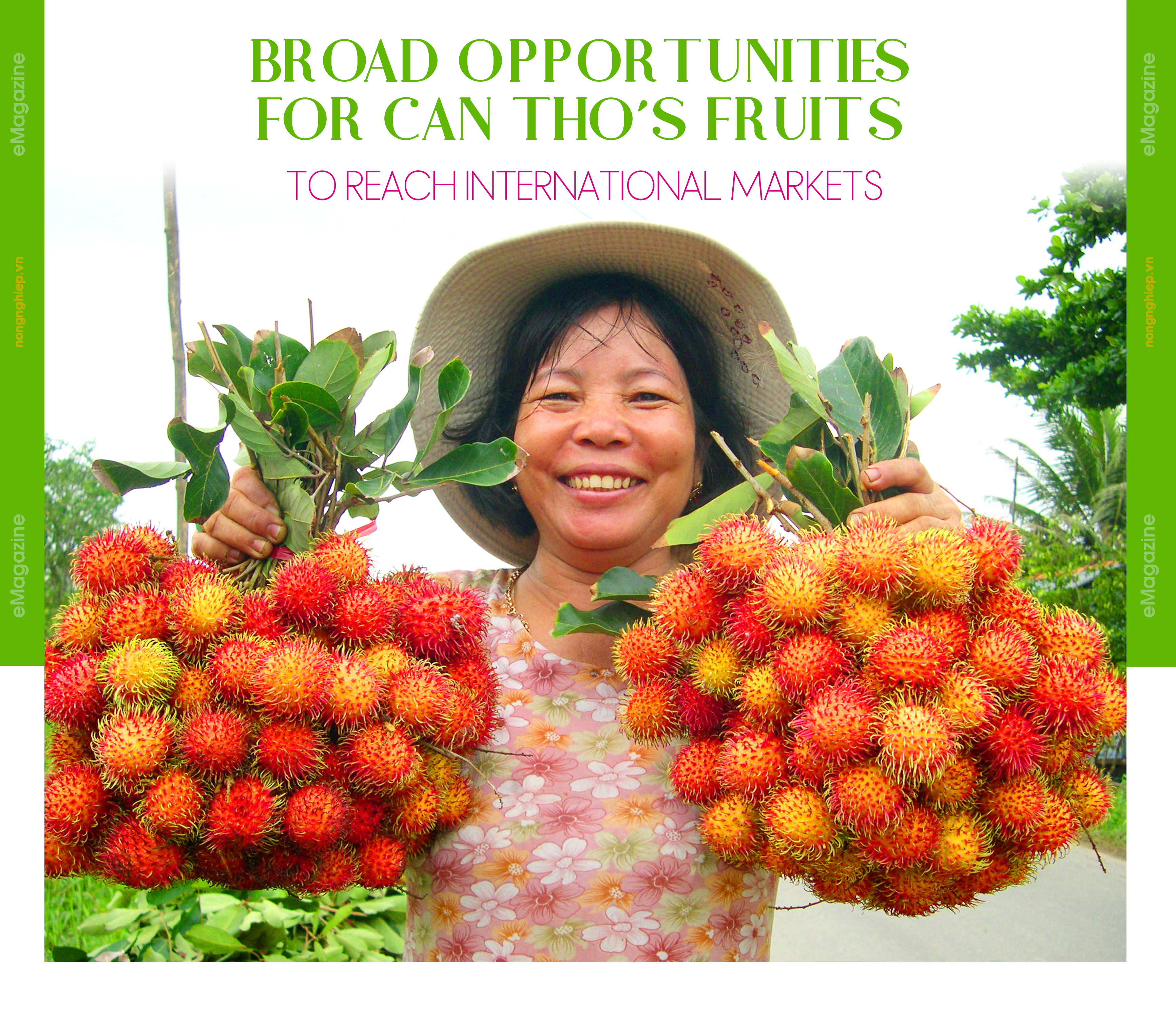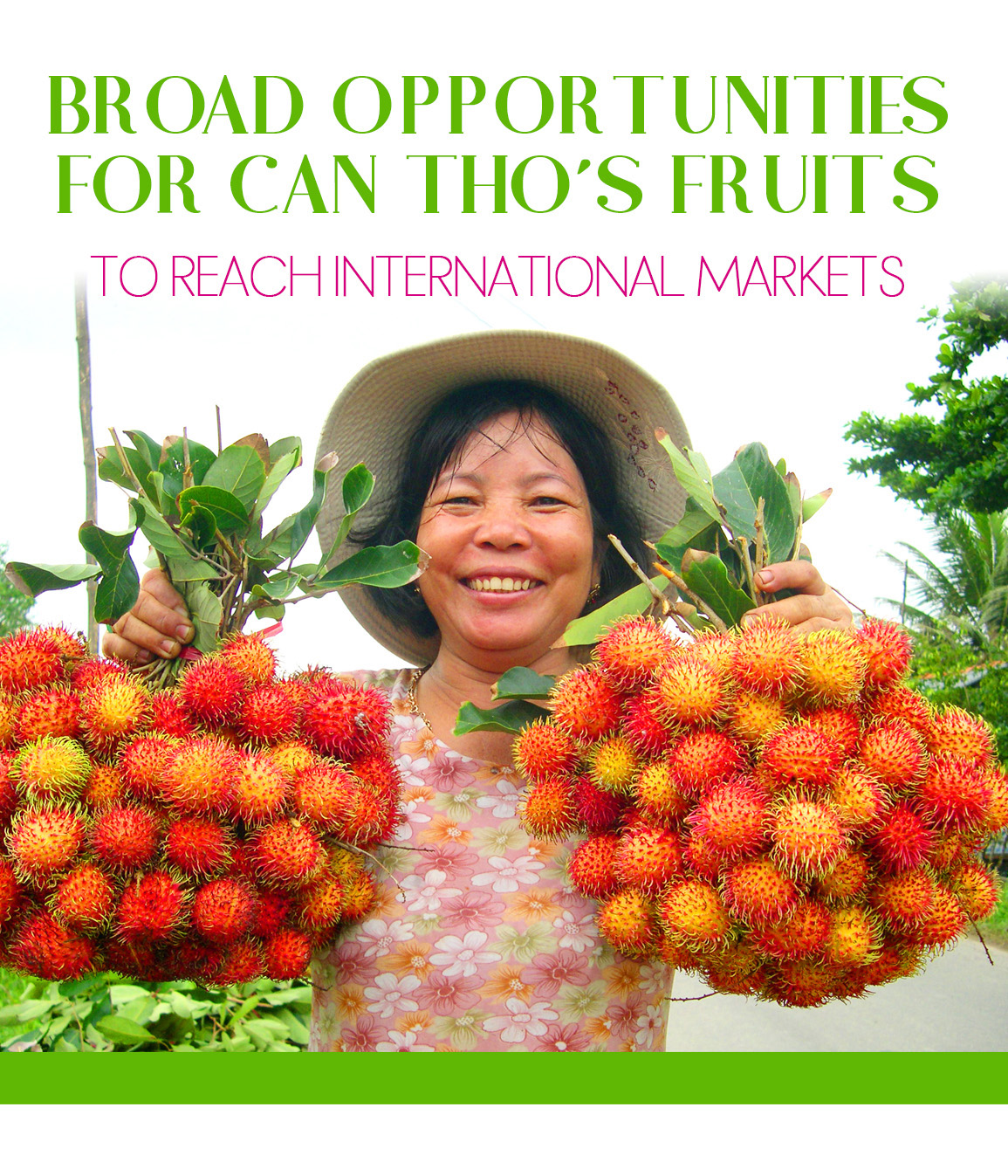In the first half of 2023, vegetable and fruit exports were estimated to reach USD 2.8 billion, up 64.2% year on year.
MARD assessed that the export potential of vegetables and fruits, in general, and fruits, in particular, is enormous due to rising global demand. Thus, other nations have introduced a number of technical barriers to food safety, compelling export producers to follow in order to ensure sustainable fruit exports.

Can Tho is one of the provinces in the Mekong Delta where fruit cultivation has experienced rapid expansion in recent years, reaching nearly 25.000 hectares at present. Can Tho has placed a high priority on developing concentrated fruit production areas and constructing model plantations due to its fruit production power.
Numerous varieties of delectable and specialized fruits are grown in the city. The greatest fruit areas include mango with 3,374 ha, durian with approximately 2,965 ha, longan with 2,611 ha, jackfruit with 1,962 ha, plum with 1,791 ha, star apple with 1,482 ha, lemon with 1,382 ha, banana with 1,140 ha, orange with 1,068 ha, pomelo with 744 ha, rambutan with 392 ha, guava with 314 ha, and mangosteen with 300 ha. Additionally, there are 1,534 hectares devoted to the cultivation of coconuts and 4,242 hectares devoted to the cultivation of other crops.
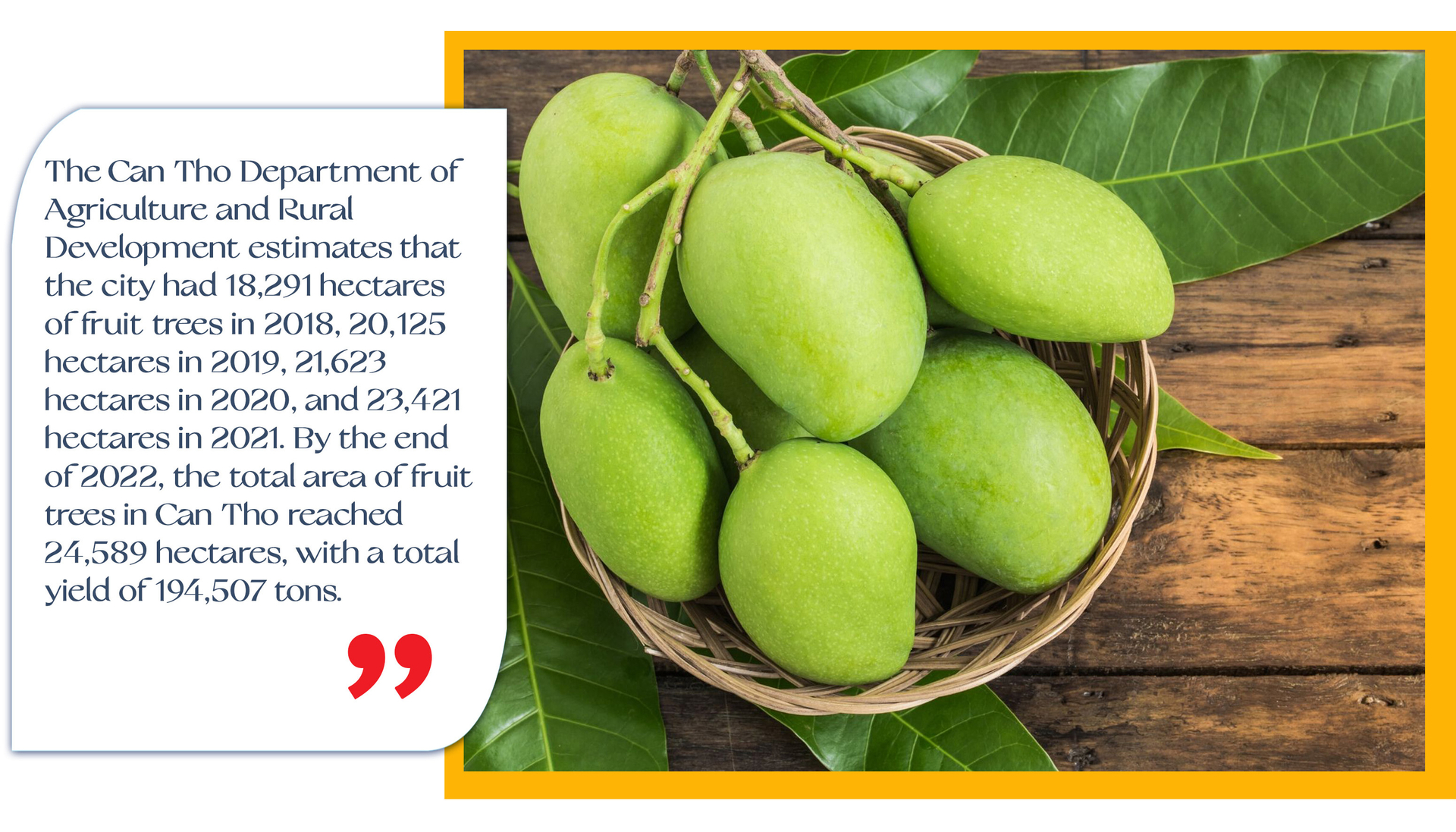
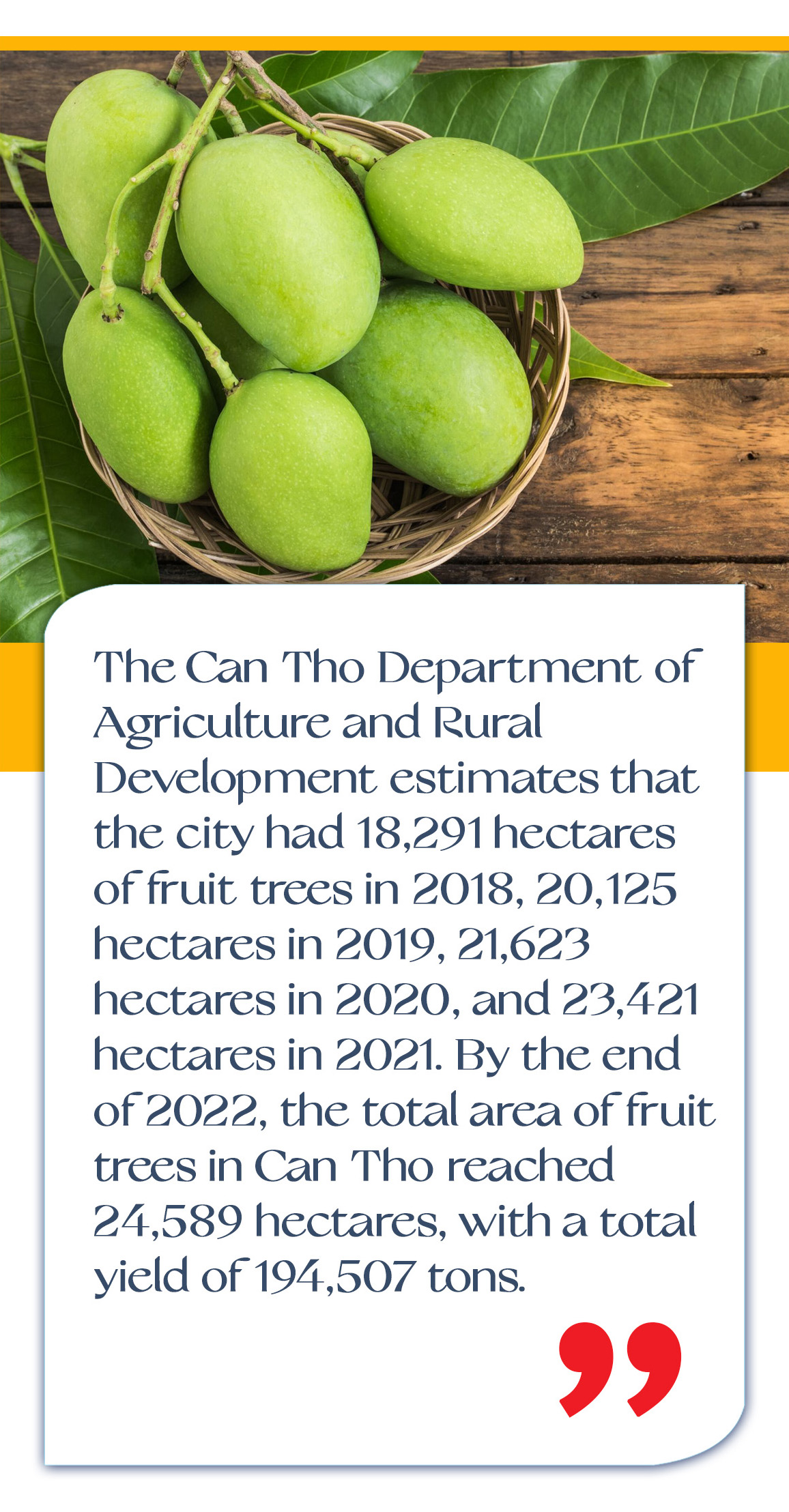
Recently, a number of delectable and specialty fruits have generated substantial income for producers, between 200 and 800 million VND per hectare per year. Farmers have also developed several models of fruit cultivation combined with ecotourism, which yield 1.5 to 2 times more profit than specialized fruit growing.
However, the city remains concerned about the future output of the products. The reasons stem from the fact that fruit producers pursue "price" and "trend", enterprises lack consumption contracts, and there is no direct connection between production, processing, and consumption. Farmers continue to cultivate numerous types of fruit trees, particularly durian trees because durians are sold at a premium price.
Phong Dien district is notably the "hub" of concentrated fruit specialized production, with over 8,789 hectares devoted to the cultivation of high-economic varieties such as Ha Chau strawberries, star apple, Ido longan, durian, and durian, seedless lemon, mangosteen, and honey orange, which are well-known and widely consumed in domestic and international markets.
Phong Dien has paid close attention and concentrated on developing production models in accordance with VietGAP and GlobalGAP standards in order to increase agricultural products' productivity, quality, and output. The district is implementing 9 production models in accordance with the VietGAP process, including 8 fruit tree models. The district has 23 production models that meet VietGAP standards, with a total area of 286ha and 422 participating households; 1 Global GAP model of milkweed cultivation in Truong Long commune, with an area of 16.1ha and 12 participating households. In addition, the district develops the code for the fruit-growing area in the region and provides support for participation in the "One commune, one product" program.
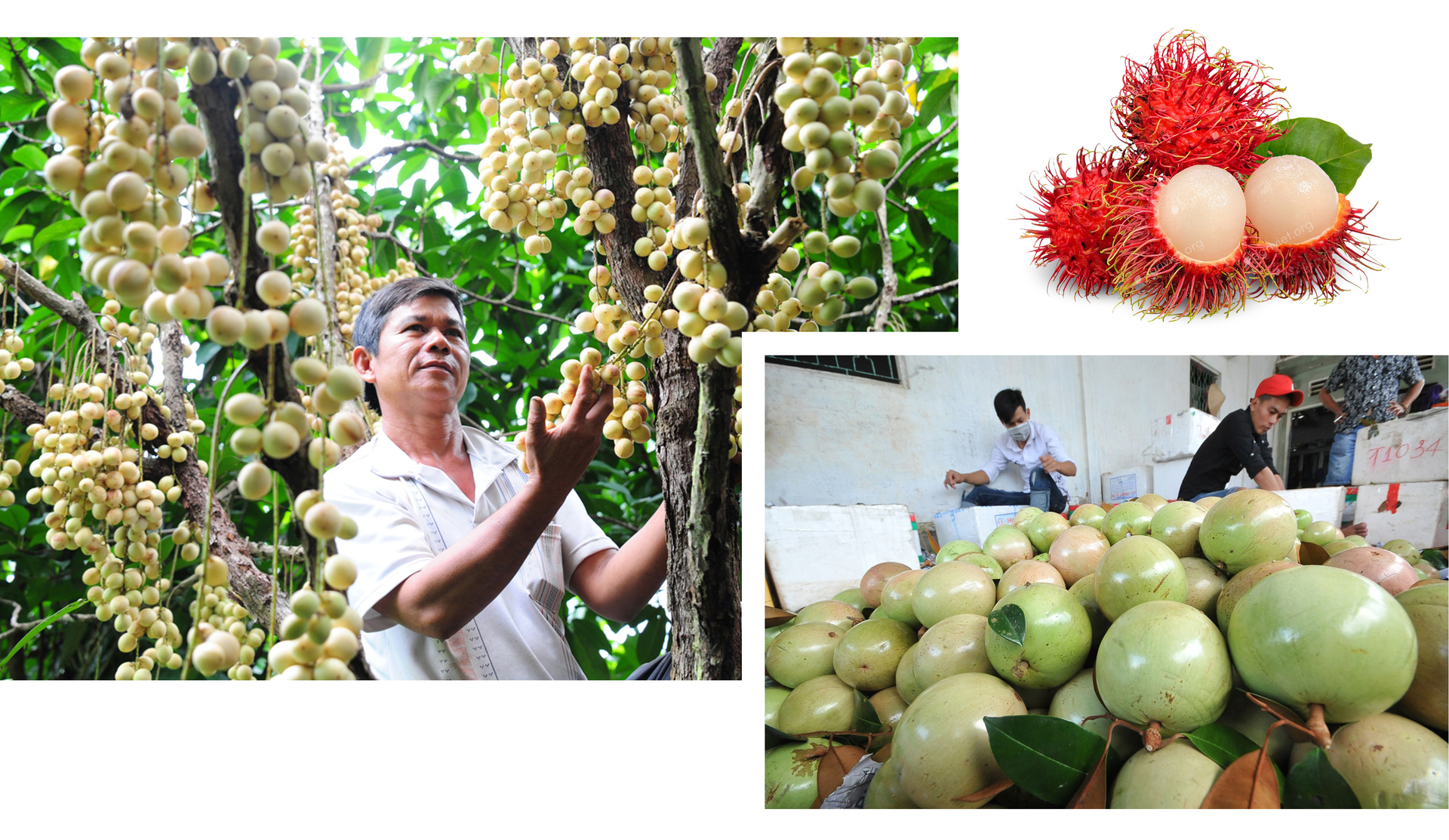
Mr. Nguyen Van Thang, Deputy Chairman of the Phong Dien district People's Committee, stated that in order to catch up with the e-commerce trend, Phong Dien has developed a digital economy of agriculture, which encourages farmers, agricultural production households, cooperatives, and cooperation groups to market their products on an e-commerce platform. This bridge also connects Phong Dien's specialty fruits to domestic and international markets. Additionally, the district organizes festivals and fairs to promote and introduce the producers of Phong Dien's specialty and high-quality fruits. At the same time, make it easier for farmers to access the market, purchase agricultural products, increase their income, and encourage tourists to visit and appreciate the bounties of Phong Dien, among other things.
Nguyen Van Luc, a farmer in Nhon Ai commune, Phong Dien district, stated, "This year, we harvested approximately 4,000 m2 of4,000m2 durian crops; the trees are approximately ten years old, yielding more than three kilograms per 1,000 m2 and selling for 50,000 to 55,000 VND per kilogram. I can earn approximately 80 million VND per square meter. Due to the promotion of durian exports to China, the majority of durian producers have a strong harvest and command a high price this year. Due to the fact that producers in numerous regions of the country are promoting durian cultivation, I am also concerned about the future output price of durian."

According to Mr. Tran Thai Nghiem, Deputy Director of the Can Tho Municipal Department of Agriculture and Rural Development, health-conscious consumers have grown used to spotting guarantee products. Numerous producers in Can Tho have produced products with VietGAP and GlobalGAP certifications.
However, depending on the production organizations, some units are sold to businesses at attractive prices while others are sold at regular prices. Typically, the agricultural industry will support producers when VietGAP or GlobalGAP products are linked with cooperatives and enterprises. After the first phase, when the support period for VietGAP and GlobalGAP certification expires, individuals will spend their own money to re-certify in order to continue selling high-priced goods to businesses. In addition, farmers must work together, both as producers and consumers, to ensure that the quantity supplied fulfills the quality standards of customers.
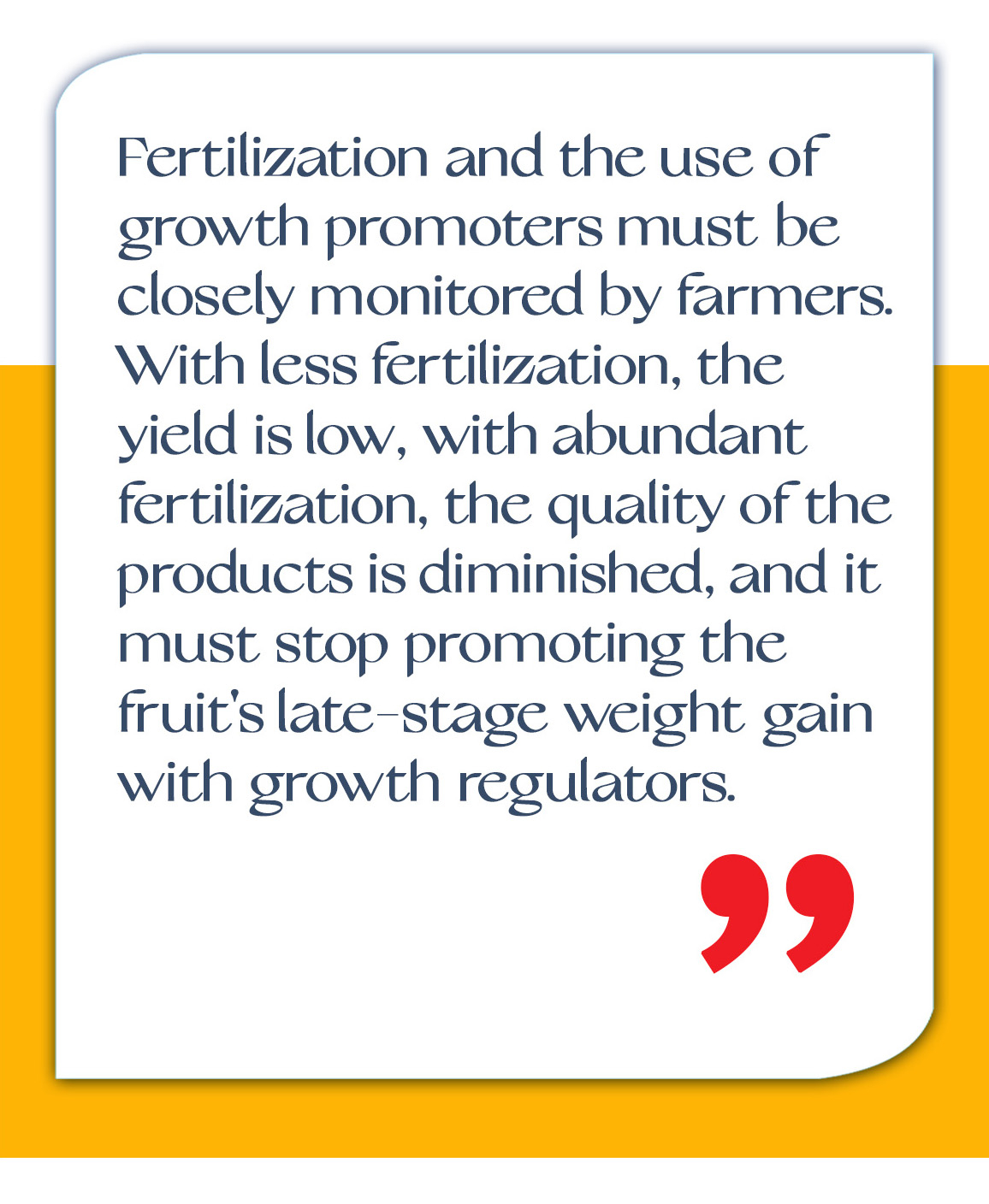
Mr. Tran Thai Nghiem also stated that in recent years, Vietnam has gained access to the U.S. and Chinese markets in order to export a variety of fruits grown on a large scale in the Mekong Delta. This indicates that Vietnam's agricultural exports are growing. Exporting necessitates higher quality and safety standards. Importantly, the product must be tasty, secure, available in large quantities, and traceable. Businesses that wish to export to the United States must register with an American collaborator. Therefore, it is necessary to have an association to support THTs and cooperatives with high output, producing using the same method, and satisfying import requirements for exporting to international markets.
Prof. Dr. Nguyen Bao Ve, Senior Lecturer at Can Tho University, stated that in accordance with VietGAP or GlobalGAP standards, all three safety factors must be addressed, namely safety for producers, environmental protection, and consumer safety. This will enhance the reputation of the producers' products and reassure consumers not to reject them. However, when safe production reaches the customer, the product may be deformed and damage the farmer's reputation. Therefore, individuals must collaborate to produce high-quality fruit.

Can Tho has been granted 46 codes for 37 cultivation areas covering a total area of 602ha, as well as 7 codes for five export packaging facilities.
To stabilize the output of fruit trees, Can Tho is supporting and encouraging producers to standardize production to satisfy export development standards and requirements for high quality. At the same time, encourages farmers to employ scientific and technical advancements and to collaborate with businesses and other stakeholders along the product chain in order to enhance the productivity of fruit production and commerce.
In recent years, the area of fruit trees in Can Tho has increased steadily, making a significant contribution to the restructuring of agricultural production in order to increase farmers' incomes per unit of land. The city has nearly 25,000 hectares of fruit trees, including many varieties of fruit with the potential to increase exports and generate high value. Can Tho cultivates a variety of delectable and specialized fruit trees, the majority of which are produced in a relatively expansive area. During the first six months of 2023, Can Tho produced nearly 80,000 tons of fruits.

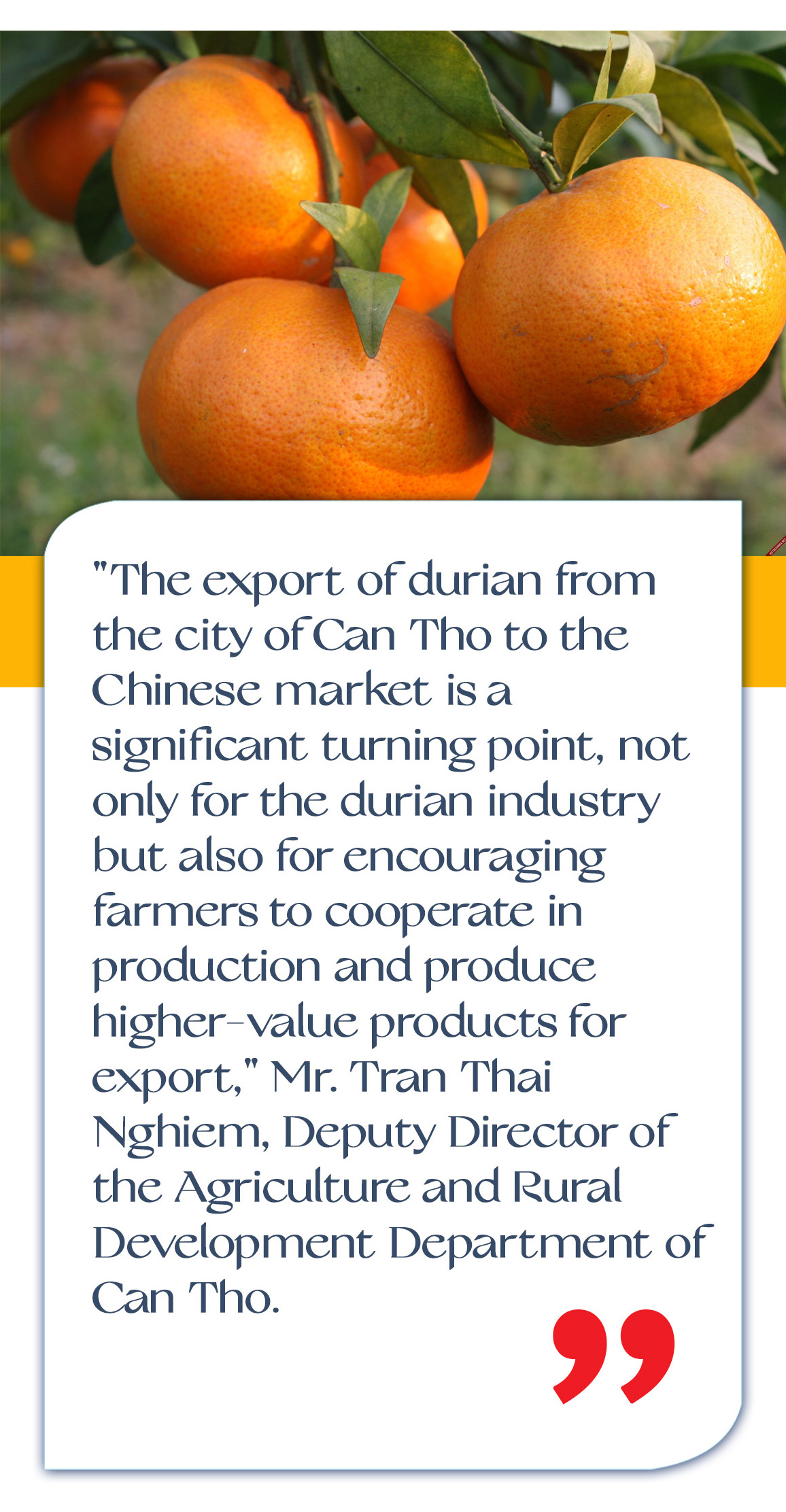
Numerous fruits produced in the city, such as bananas, jackfruits, lemons, mangoes, longans, and durians, are exported to many countries and territories around the globe, including Japan, Korea, the United States, and the European Union.
However, only a small number of fruit growers in the city have been granted planting area codes and certification for good agricultural practices such as VietGAP, Global GAP, and others. While a number of nations imposed increasingly stringent requirements on the standards and quality of imported fruits, cultivation area codes and packaging facility codes were required to ensure origin traceability.
Therefore, in order for Can Tho's fruit to maintain and expand its export market, farmers and cooperatives, fruit production and business enterprises must promptly standardize their production to meet the export market's specifications.
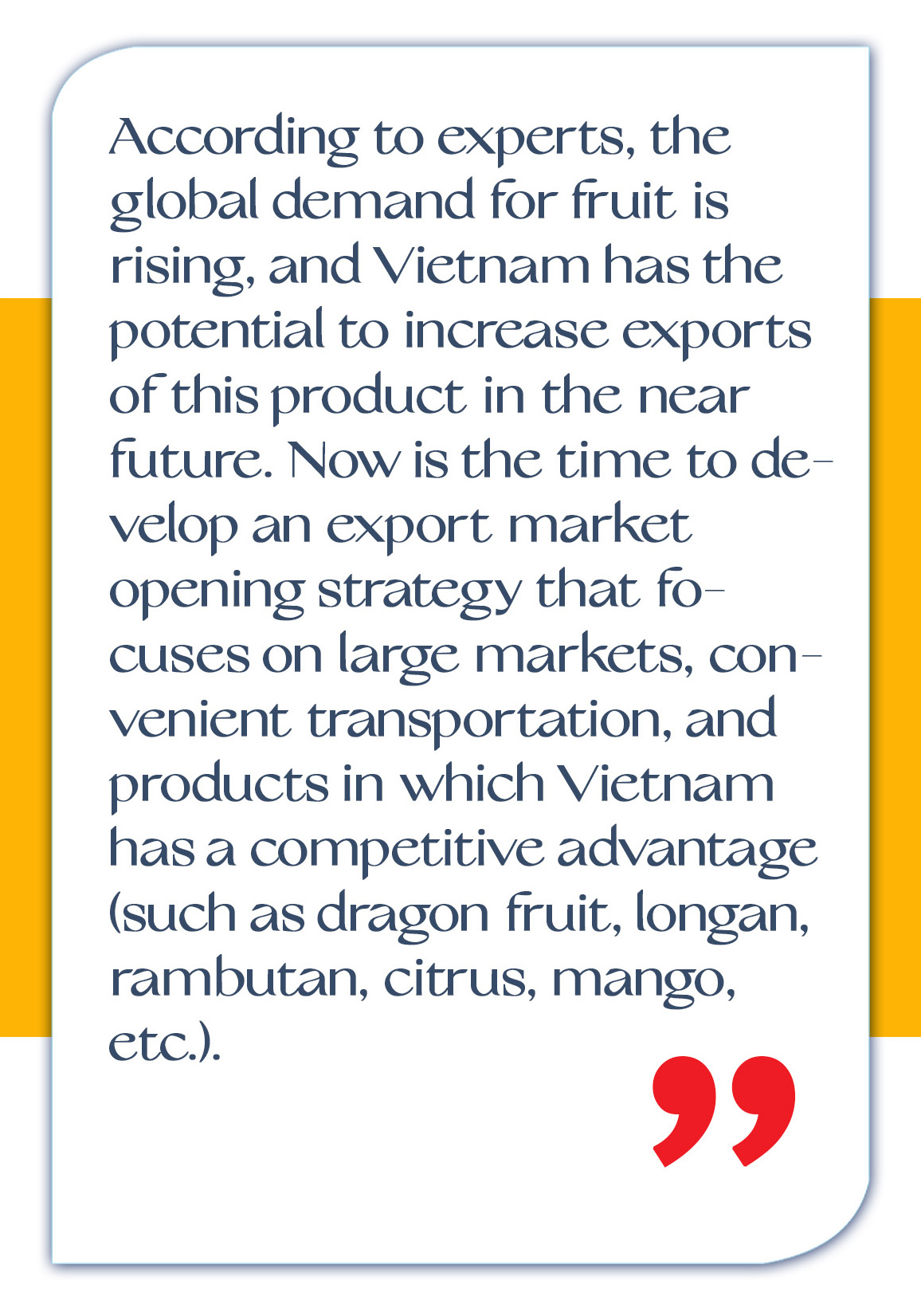
According to the Can Tho Plantation and Plant Protection Department, the city has 477 hectares of fruit trees grown in accordance with VietGAP and GlobalGAP guidelines. The functional sector has granted and reissued a total of 17 planting area codes covering 150ha since the beginning of 2023. Thus, cooperatives, farmer households, and fruit tree production and business enterprises in the city have been granted 52 codes for 37 growing areas with a total area of over 602ha and 7 codes for 5 packaging facilities to serve export markets such as the United States, Australia, China, the Republic of Korea, and the European Union.
To assist farmers in standardizing their production in accordance with the requirements of the export market, the agricultural sector of Can Tho has promoted propaganda activities, technical training, and the regular updating and dissemination of information and knowledge about production and markets, particularly foreign standards and product quality requirements. Assist producers in devising and replicating fruit tree models that adhere to good agricultural practice standards and planting area codes. Encourage producers to form cooperatives and concentrated fruit-growing areas in order to facilitate management, standardize production, and interact with businesses.
Ms. Tran Thi Kim Thuy, the Deputy Head of Can Tho's Plantation and Plant Protection Sub-Department, stated that the administration and distribution of area codes for fruit trees and other commodities in the region continue to present numerous challenges. Notably, the area devoted to fruit trees remains fragmented and intercropped with numerous varieties. According to the regulations governing the allocation of area codes, the minimal area of fruit trees must be 10ha, whereas the average size of a household is between 5,000 and 8,000 m2. Farmers still cultivate using antiquated methods and have limited access to advanced technical tools.
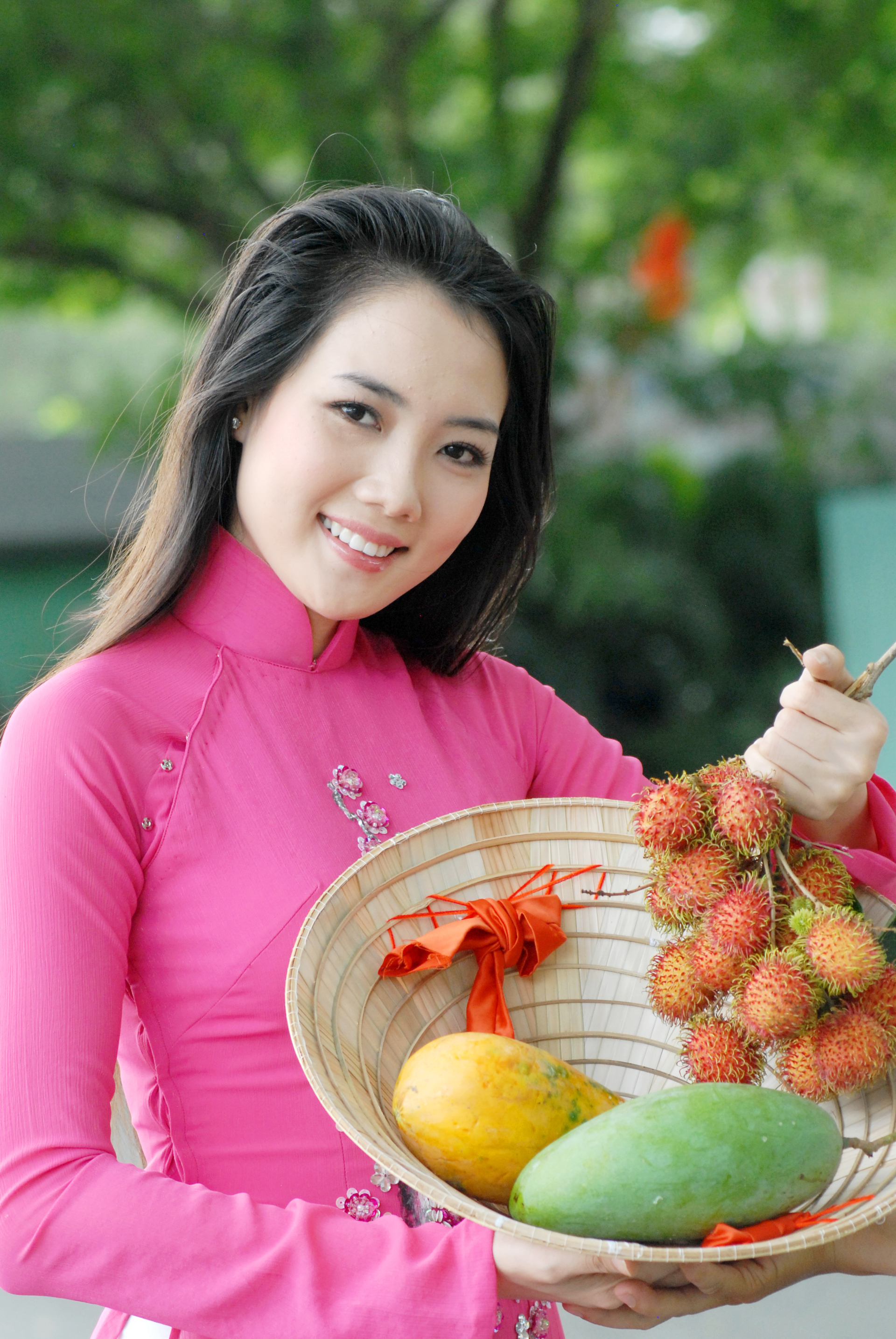
Mr. Tran Thai Nghiem, Deputy Director of Can Tho Department of Agriculture and Rural Development, proposed that the Sub-Department of Cultivation and Plant Protection, together with specialized agencies under the department and industry, check and monitor already issued codes and review requests for new codes in localities in order to effectively manage the code of planting areas and packing facilities. Support individuals and businesses in a timely manner to eliminate obstacles and overcome limitations. It is necessary for farmers and cooperatives to actively register the cultivation area code in order to facilitate product output.
According to Prof. Dr. Nguyen Bao Ve, consumers are willing to spend a great deal of money on safe products, but they do not know if fruits are really safe or not. Therefore, individuals should take note that there are numerous cultivators who produce fruits with planting area codes and sell them in supermarkets. If consumers wish to trace the origin of the fruit, they can pick up the phone. If we can produce safe goods for export market, we can do so to the domestic consumption.

In accordance with a Protocol between the Ministry of Agriculture and Rural Development and the General Administration of Customs of China, the Can Tho Department of Agriculture and Rural Development and Ngoc Minh Lang Son Import-Export Co., Ltd held a ceremony at the beginning of March to export the first shipment of nearly 20 tons of durian to the Chinese market.
Mr. Tran Thai Nghiem stated that after four years of negotiations, on July 11, 2022, the Minister of Agriculture and Rural Development Minh Hoan, inked a protocol with the General Department of Customs of China regarding the official export of durian to China. The official export will increase the value of durian and make the market more stable and sustainable. With the support of the agricultural industry, companies procuring and exporting durians, as well as units and farmers in cooperatives and cooperative groups, have begun constructing cultivation areas in Can Tho that adhere to the Protocol's requirements and criteria. After many days of labor and responsibility, producers are now reaping the rewards of their efforts.
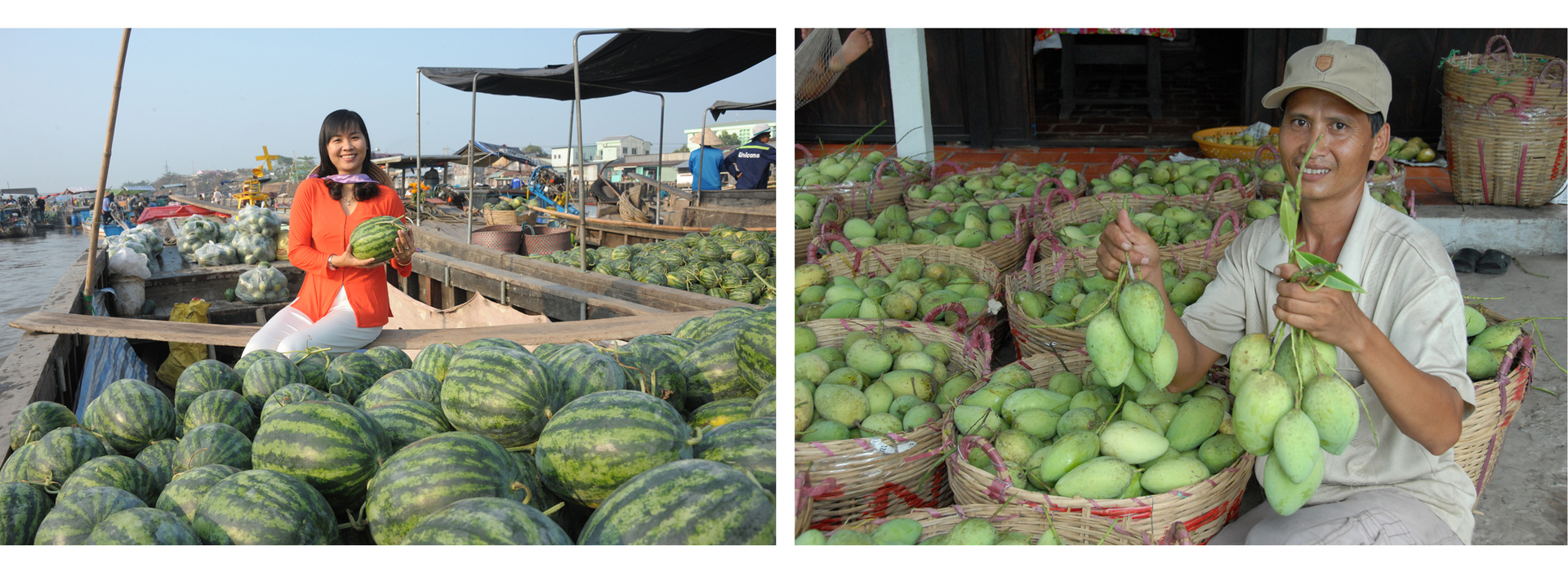
Mr. Nguyen Ngoc Nguyen Vice-Chairman of the Can Tho City People's Committee praised the first time Can Tho officially exported nearly 20 tons of Ri6 durian to a market of billions of consumers. People in Can Tho are proud of the transformation of their city's agricultural industry from a fragmented, spontaneous, and unconnected production method to a production method in response to market and business demands. Since then, a linkage chain consisting of concentrated, specialized cultivation areas eligible for management codes has been established, implementing a technical production process to guarantee the purity of durian fruit.
Mr. Nguyen Ngoc Nguyen He emphasized that durian is currently a growing crop; however, the city's agricultural sector has many directives to not expand the area and remain unmonitored, so durian does not need to be ‘rescued’. It is also a method to develop the agricultural sector and the fruit tree industry in a sustainable manner.
The Department of Plant Protection (MARD) noted that WTO member countries must comply with the phytosanitary regulations of the SPS Agreement and the International Plant Protection Convention (IPPC) when exporting fresh produce. In which fresh produce must be accompanied by a phytosanitary certificate issued by the appropriate authority. Previously, China was regarded as accommodating, but now there are more stringent plant quarantine barriers, so border trade exports are progressively restricted. China currently permits the import of eight fresh fruits from Vietnam, including dragon fruit, mango, longan, rambutan, lychee, banana, jackfruit, and watermelon, among others, with strict quarantine regulations. Due to increasing phytosanitary barriers on food safety between nations, it is more challenging to access the export market for produce. In addition, we lack extensive research and projections regarding consumer demand and preferences in critical markets. Specifically the dearth of competitor information. These are not minor obstacles for produce exports over the long term.
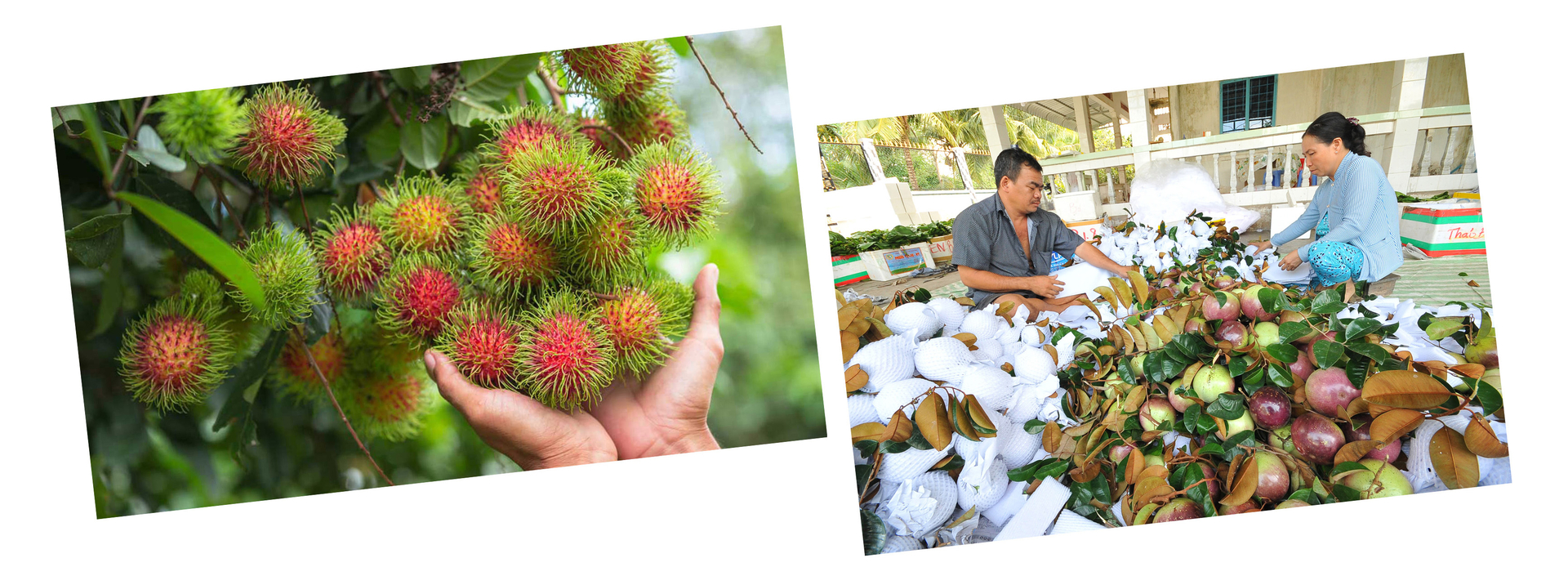
Author: Hoang Vu
Translate: Dieu Linh
Photo: Hoang Vu - Ho Thao
Designed by VAN


